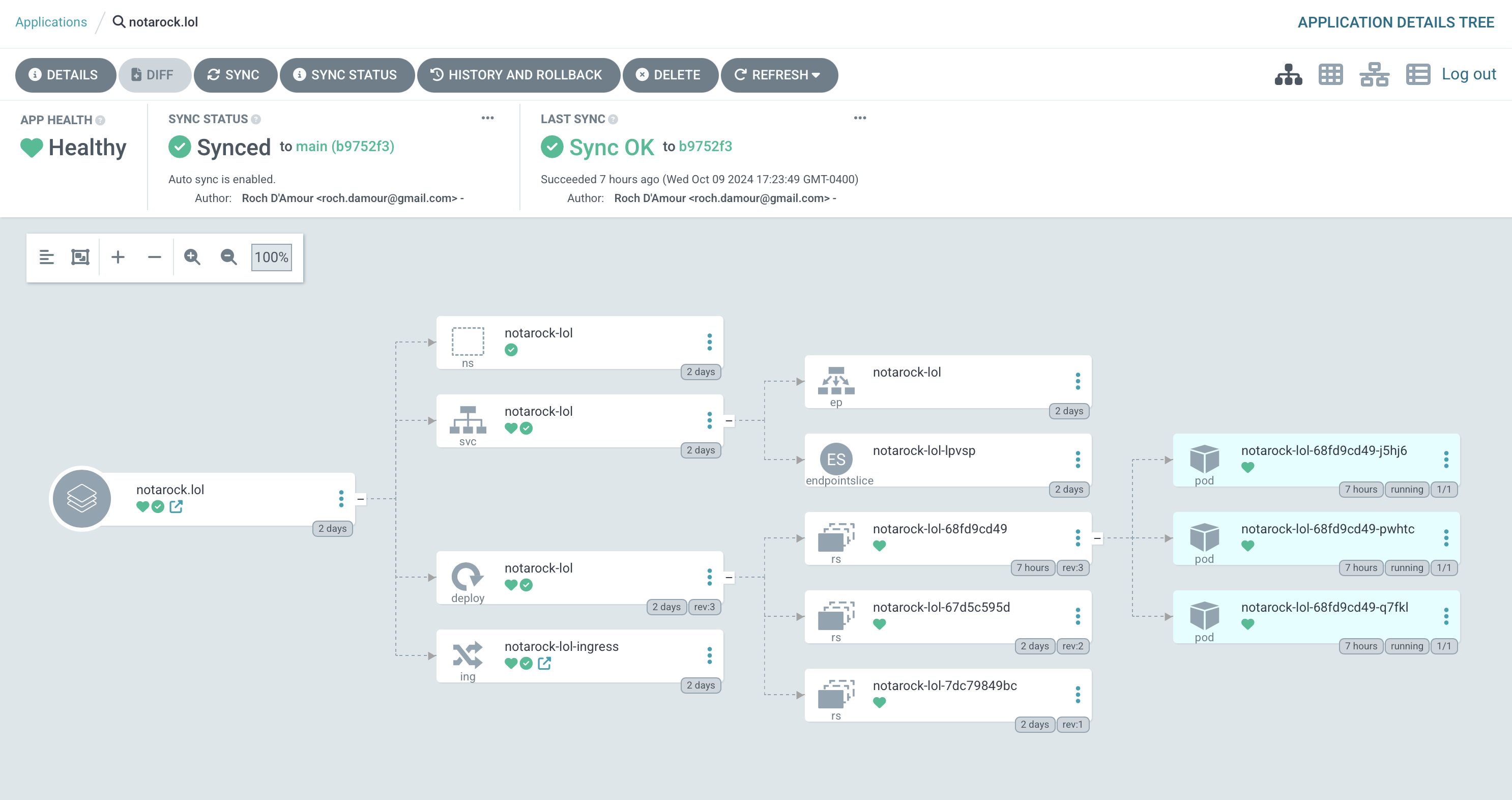You know that saying: The cobbler always wears the worst shoes? It’s about how people often don’t use their own skills on themselves, and yeah… that was me—until I finally decided to set up Argo-CD in my lab.
Whenever I push a new version of one of my projects, a reusable workflow in
GitHub Actions builds and pushes a Docker image to ghcr.io. The continuous
integration part was covered. However, I still needed to SSH into one of the
servers and manually run a docker pull or a kubectl edit deployment .... It
wasn’t too bad at first since I’d usually wait for a big enough feature before
bothering with all that. Manually pushing the tag and handling things wasn’t a
big deal when I wasn’t doing it all the time.
But then I started working on this website, making smaller updates more often, and suddenly that manual process got old really fast. So, here we are—time for Argo-CD.
Argo CD
For those unfamiliar, Argo-CD is a declarative GitOps tool for Kubernetes. It automates the deployment of applications, syncing your Kubernetes cluster with what’s defined in your Git repository. It is a part of the Argo project, which gained the Graduated status under the CNCF in December 2022.
Getting started with Argo-CD was straightforward. I just had to create a local copy of the values.yaml file, make a few tweaks to match my setup, and then deploy it using Helm.
|
|
Wait a bit, then argo-cd shows up on my local network. Neat!
GitOps repository
To get Argo CD to sync your configuration into your cluster, you first need to set up a repository and grant it read access. In my case, I’m using a repository called GitOps, which contains a folder for each service. Each folder looks something like this:

The kustomization.yaml file is pretty straightforward. Argo CD recognizes that
this folder uses Kustomize and will automatically render the configuration for
us, making things a lot easier.
|
|
With those files pushed to the repository, I created a deploy key with read access. This lets Argo CD sync with the repository and automatically apply any new changes.
Since this is just a single-user setup, I don’t need separate repositories for each service. I’m perfectly fine with connecting one repo that contains all the manifests for my lab—it keeps things simple and easy to manage. Maybe I will come back on this decision later, who knows.

Deploying the Application
In Argo CD, an Application is a defined bundle of manifests to be applied to the cluster. This can be plain Kubernetes manifests, a Helm chart, or a Kustomize bundle. From the Application menu, just select New App, connect the repository, specify the path to your configurations.

Clicking on an application in the list reveals all the components deployed as part of it. If anything goes wrong during a deployment, you’ll see the issue right there, making it easy to troubleshoot.

Voila
The only downside now is the need to update the image’s versions in my
deployment.yaml every time I make some change. This is already getting
annoying, I have to-do something about it soon…